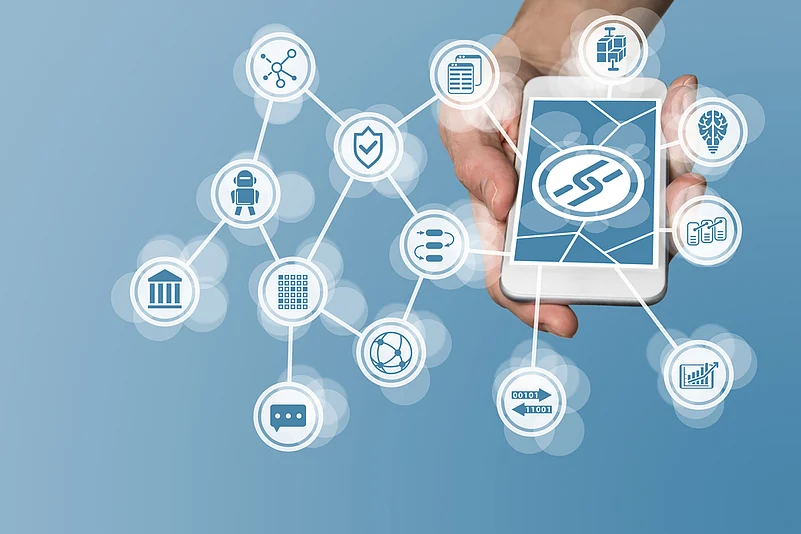With COVID-19 afflicting the world, banks everywhere are in for a prolonged period of pain. Both interest margins and fee income are under pressure. NPAs are looming as the corporate sector fights for survival; along with small businesses, the need for trade finance is evaporating. The wealthy are not as rich anymore and the middle class is finding it hard to meet their debt obligations. At the same time, banks are expected to prop up systemic stability by decreasing rates, relaxing capital rules, and taking suitable liquidity measures, as well as support their customers by deferring loan repayments and waiving charges.
Advertisement
Blockchain to the rescue
In this impossible situation, blockchain technology holds out a slender hope. Earlier this month, the World Economic Forum reported that at the very least, blockchain could indirectly help to mitigate the pandemic’s impact by improving the visibility of supply chains that have been massively disrupted.
For banks, which have invested heavily in this technology – the industry is expected to account for 30 per cent of total blockchain spending through 2023, if not beyond – the COVID-19 crisis is opening up new blockchain opportunities and accelerating adoption of established use cases.
As the world works from home, organisations will step up investment in digital and automation technologies. The sharp increase in the number of employees accessing enterprise systems and data remotely will heighten concerns of data security, privacy, and confidentiality, creating a need for robust authentication and access control. Blockchain can not only provide this but also protect data from being stolen or tampered with. Banks invested in the technology can now leverage it to secure the data and applications on their network.
Advertisement
A very recent survey of 1,000 bank customers found that 82 per cent of respondents were worried about stepping into their local branch, and 63 per cent were more willing to connect via a digital app or website than they were before the pandemic. With the world eliminating physical touch in the wake of the coronavirus spread, blockchain can add immense value by facilitating digital payments in place of cash transactions.
These are only a couple out of a host of use cases. After retail / peer-to-peer (P2P) payments, business-to-business (B2B) payments are also ready for migration to distributed ledger technology. In November 2019, a company that analyzes digital technology markets said that blockchain-based cross-border B2B payments would cross $ 4.4 trillion by 2024; the pandemic may have just given it some more impetus. Blockchain can also facilitate digital KYC compliance in the programs launched by governments and international agencies, such as WHO and UNICEF, to provide essential services to the marginalised and unemployed.
While several banking operations are already digitized and automated, trade finance lags in this area, continuing to rely on manual data exchange and paper documents that are handed over in person. A big reason is that trade finance is a chaotic business, involving several counterparties and external actors, in addition to the exchange of unstructured information. However, blockchain offers a way out of this complexity, by enabling digitized trade documents to be exchanged with complete confidence via an immutable, highly secure ledger. Since all the counterparties are on a common blockchain platform, there is complete transparency between them, creating trust even between strangers.
Advertisement
Banks that find it hard to provide financing on their own in these difficult times can participate in a blockchain-based shared lending network. They can also use their blockchain trade finance platform to provide remote advisory services to corporate customers needing help with meeting their current loan obligations, or additional sources of financing. The same network can be used to refinance existing assets to enable clients to overcome supply versus demand challenges.
Last but not least, blockchain can mitigate the psychological impact of lockdown among bank employees by supporting video meetings and remote learning.
Cloud against COVID-19
Another technology that is proving critical amid COVID-19 induced disruption is the cloud. Banks, which had started to migrate their workloads to the cloud, are accelerating the transition to accommodate a workforce that operates from home, is spread across locations, works only part-time or for short durations, and connects to enterprise servers remotely. Quite naturally, the training and education needs of these employees will also be fulfilled on the cloud. The same holds for any educational or marketing content directed at customers.
Advertisement
Even the means of partner enablement and empowerment, such as APIs, microservices, and integration frameworks, will migrate to the cloud, along with banks’ internal analytics, reporting, and communication activities.
Cloud-based applications are a lot more flexible from a connectivity standpoint, and also cost-effective compared to on-premise versions. With cloud providers ensuring data privacy and confidentiality, the cloud may just be what the doctor ordered to fight the COVID-19 malaise.
The author is the VP, Global Head for Business Consulting, Infosys Finacle
















 Just one email a week
Just one email a week